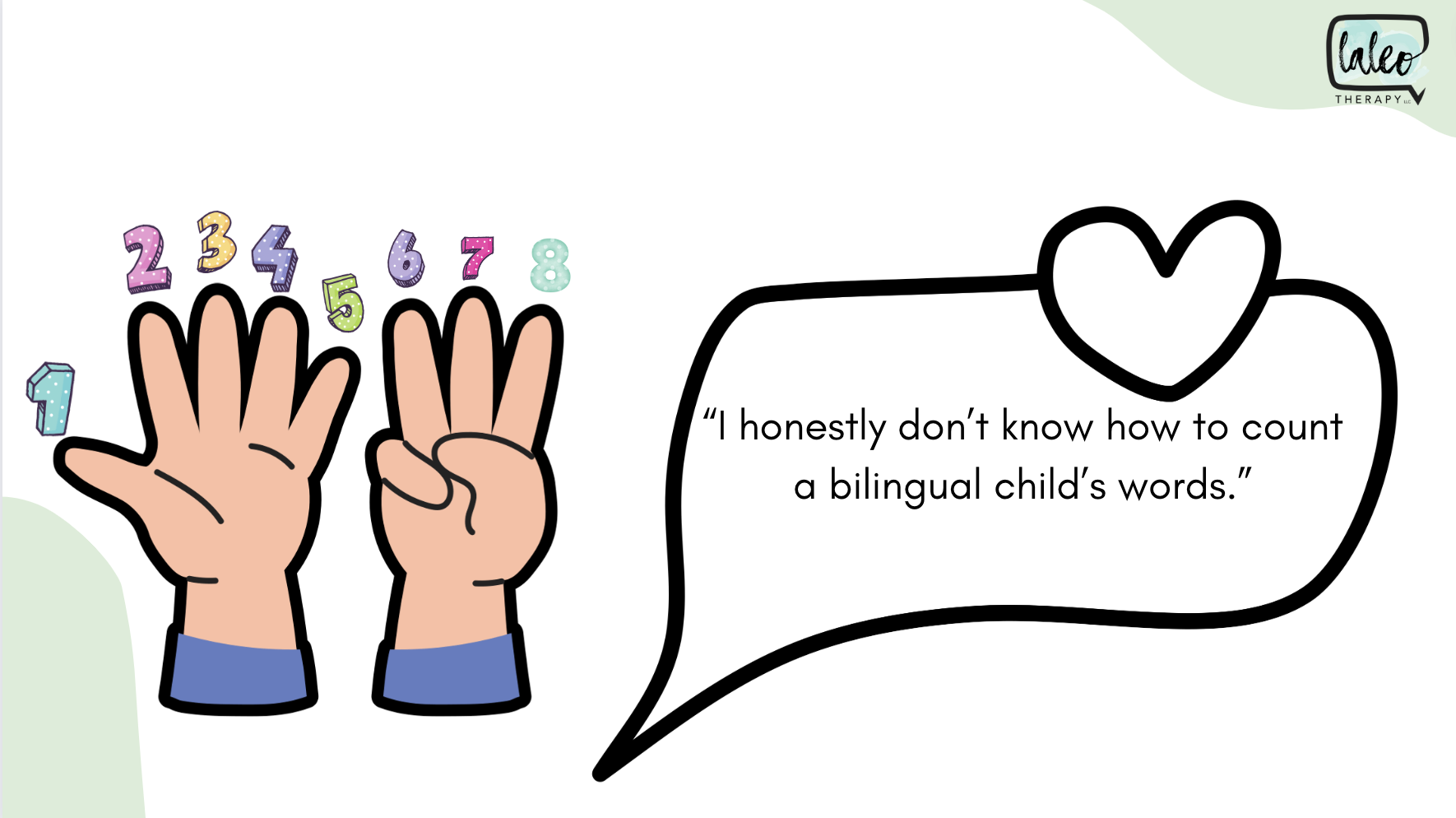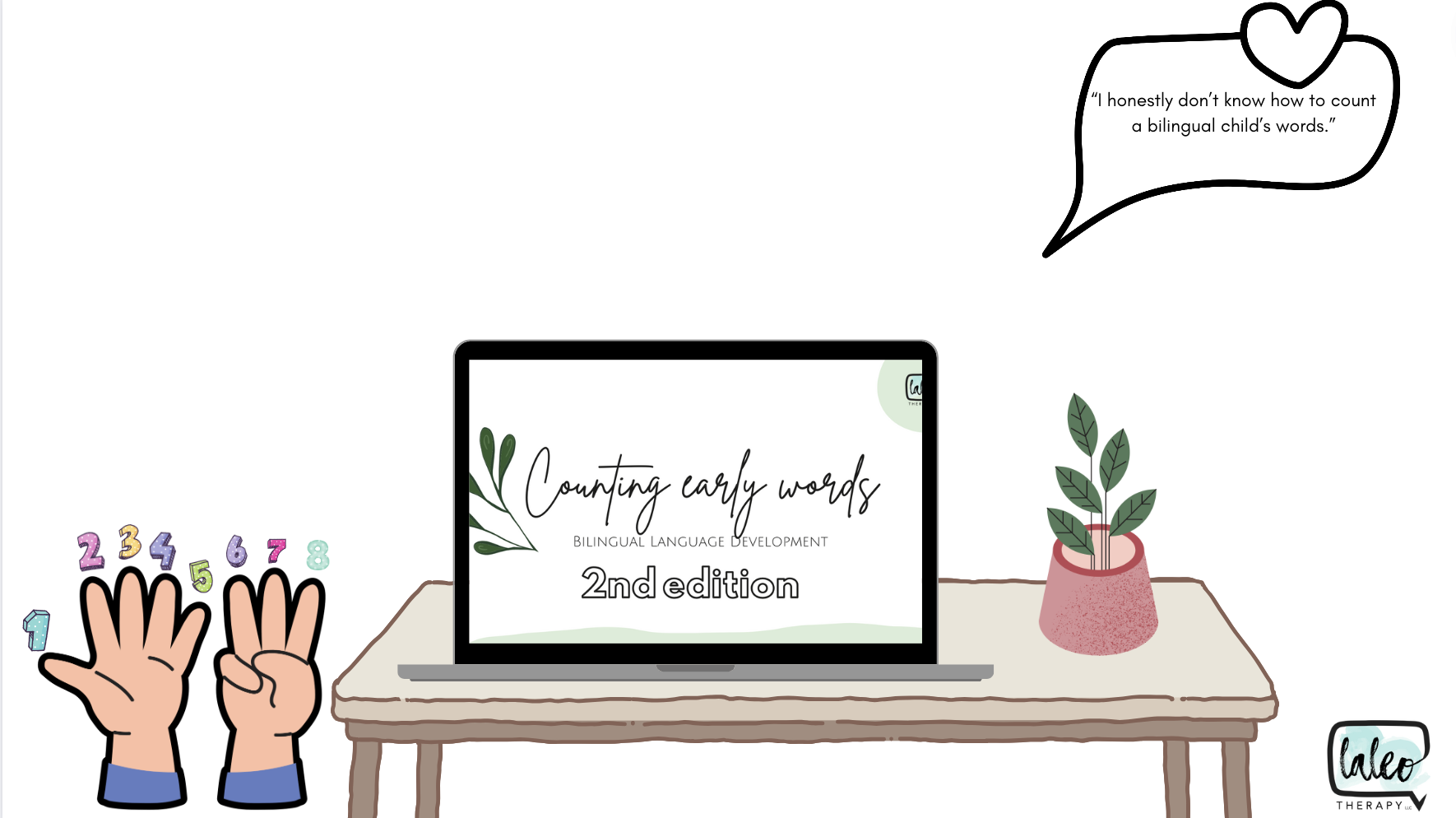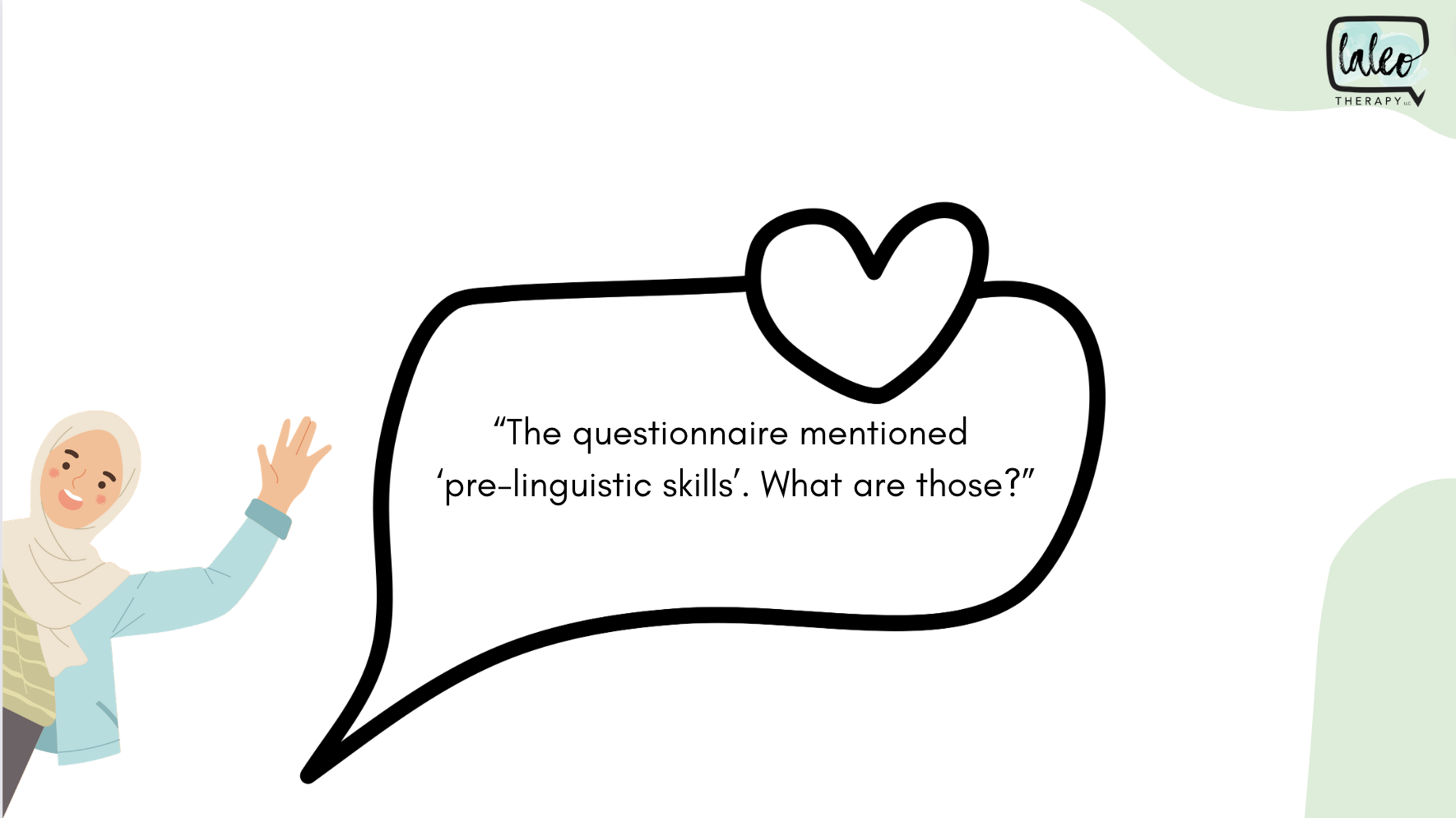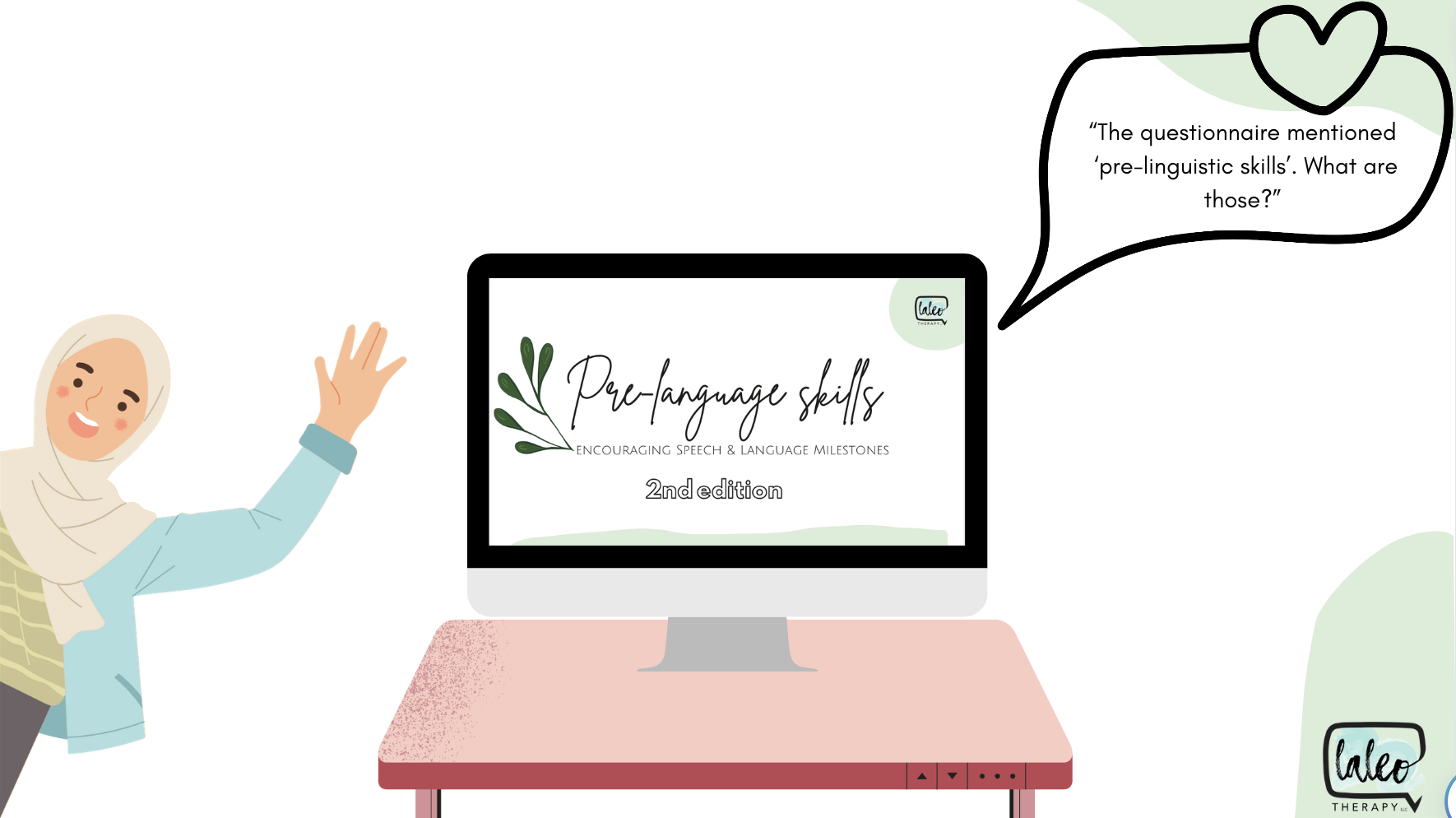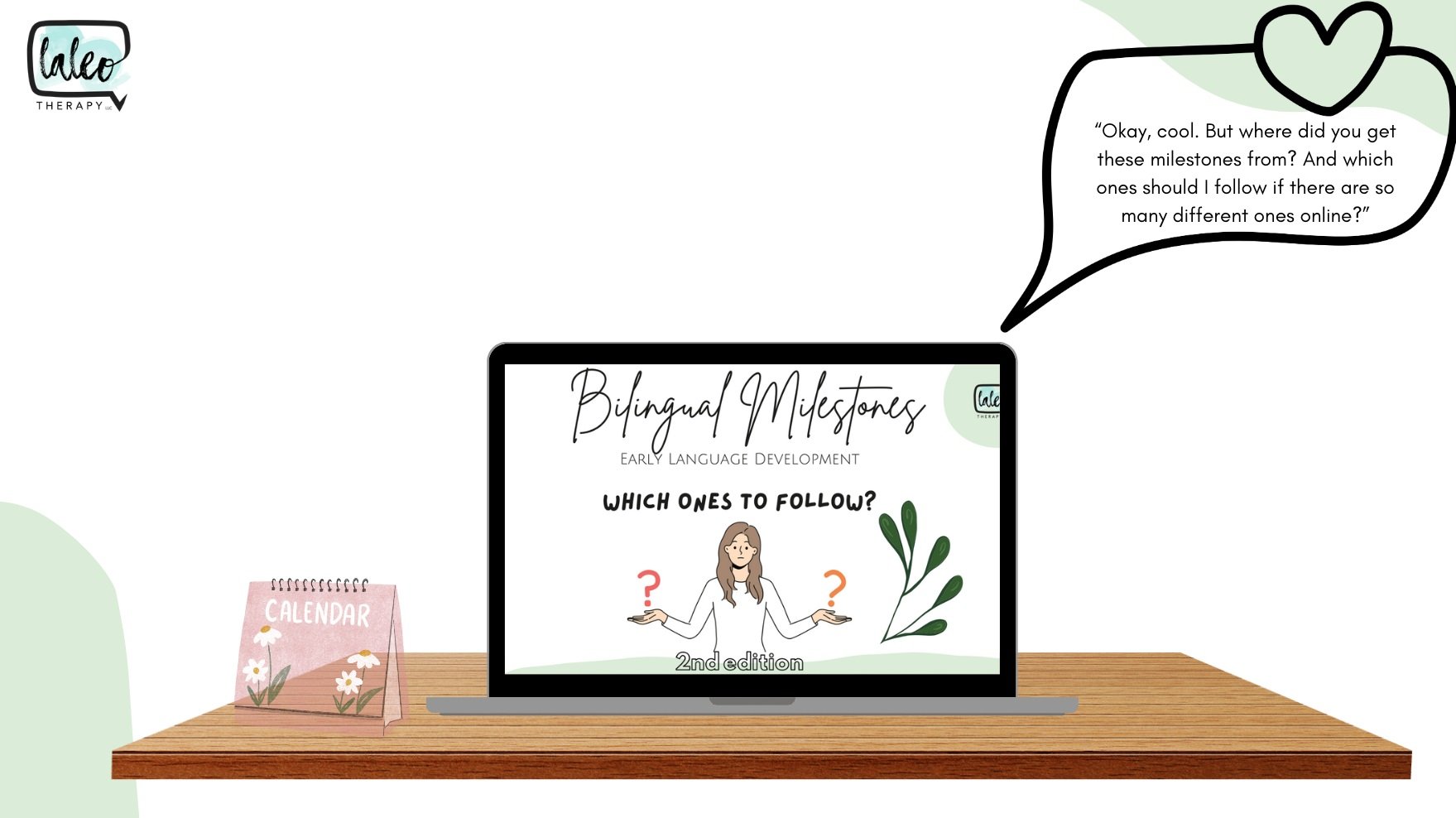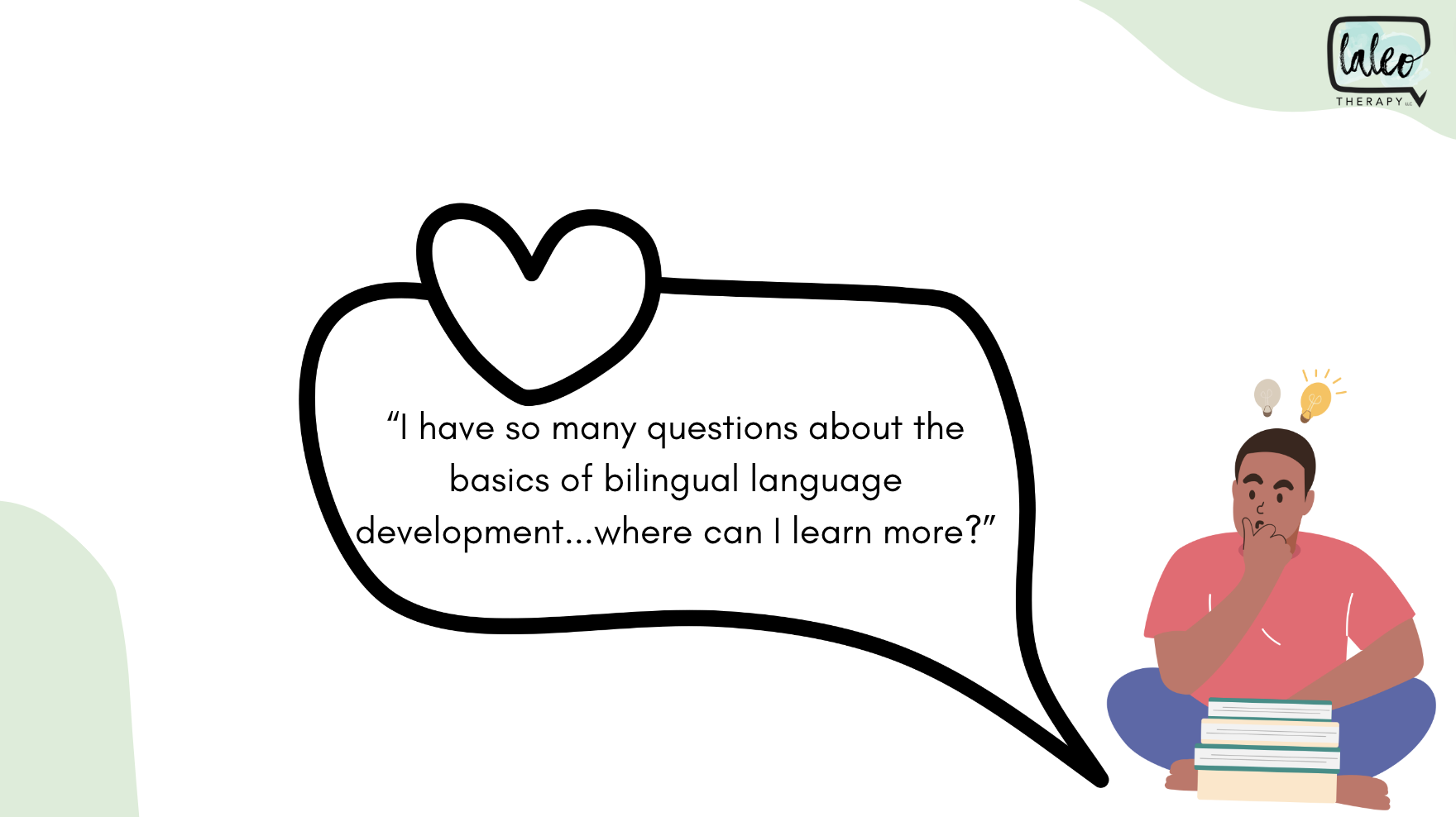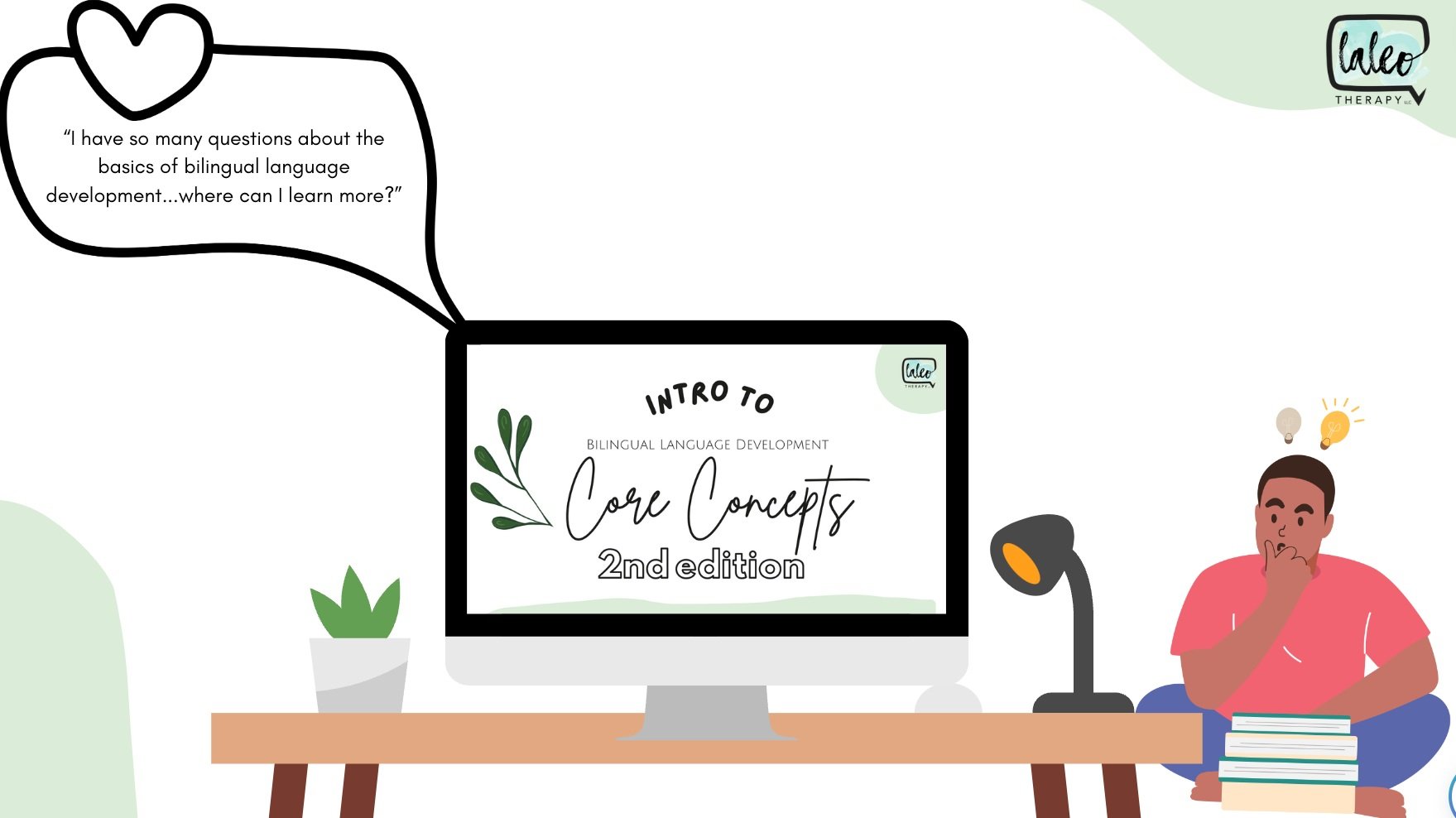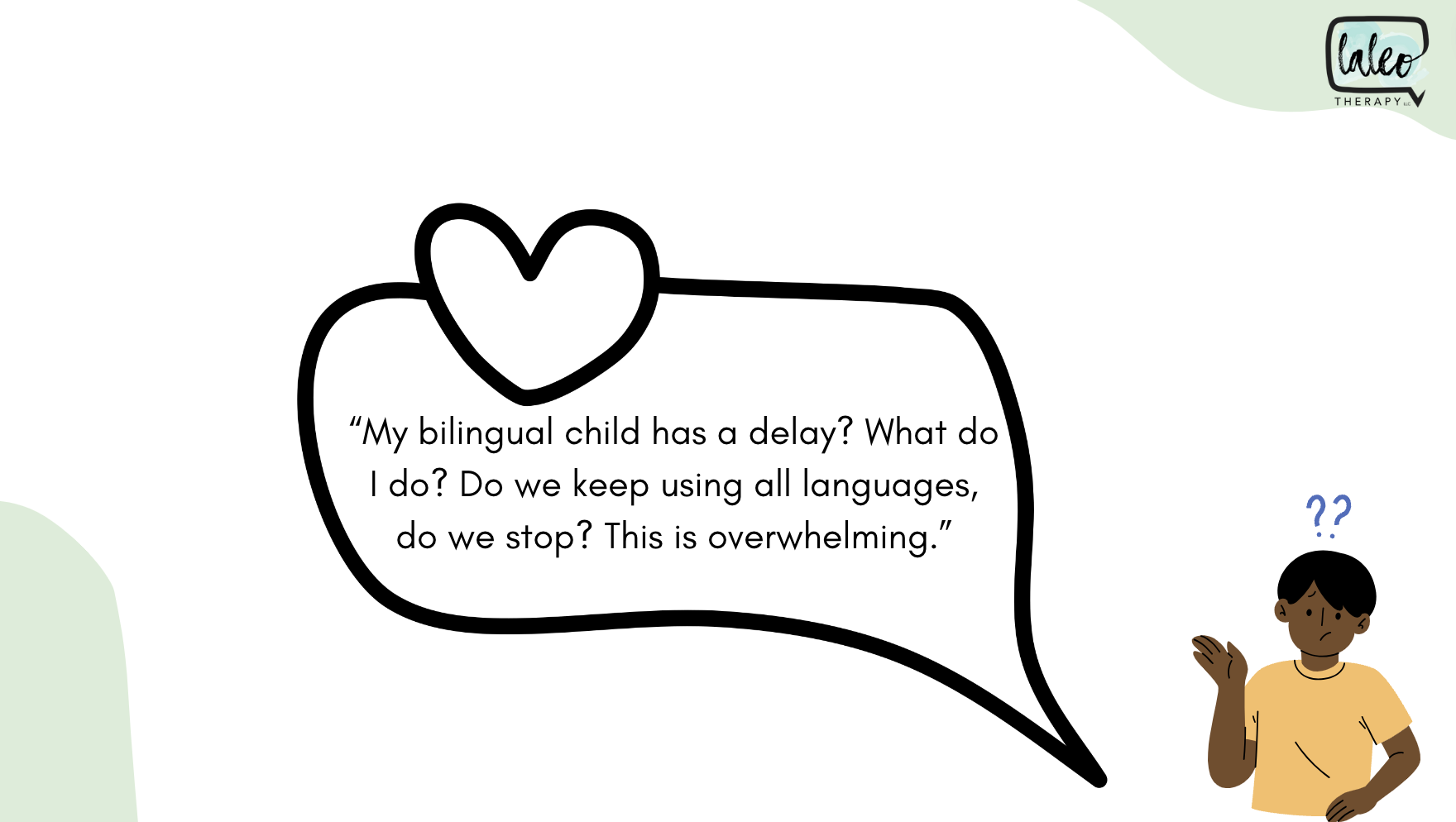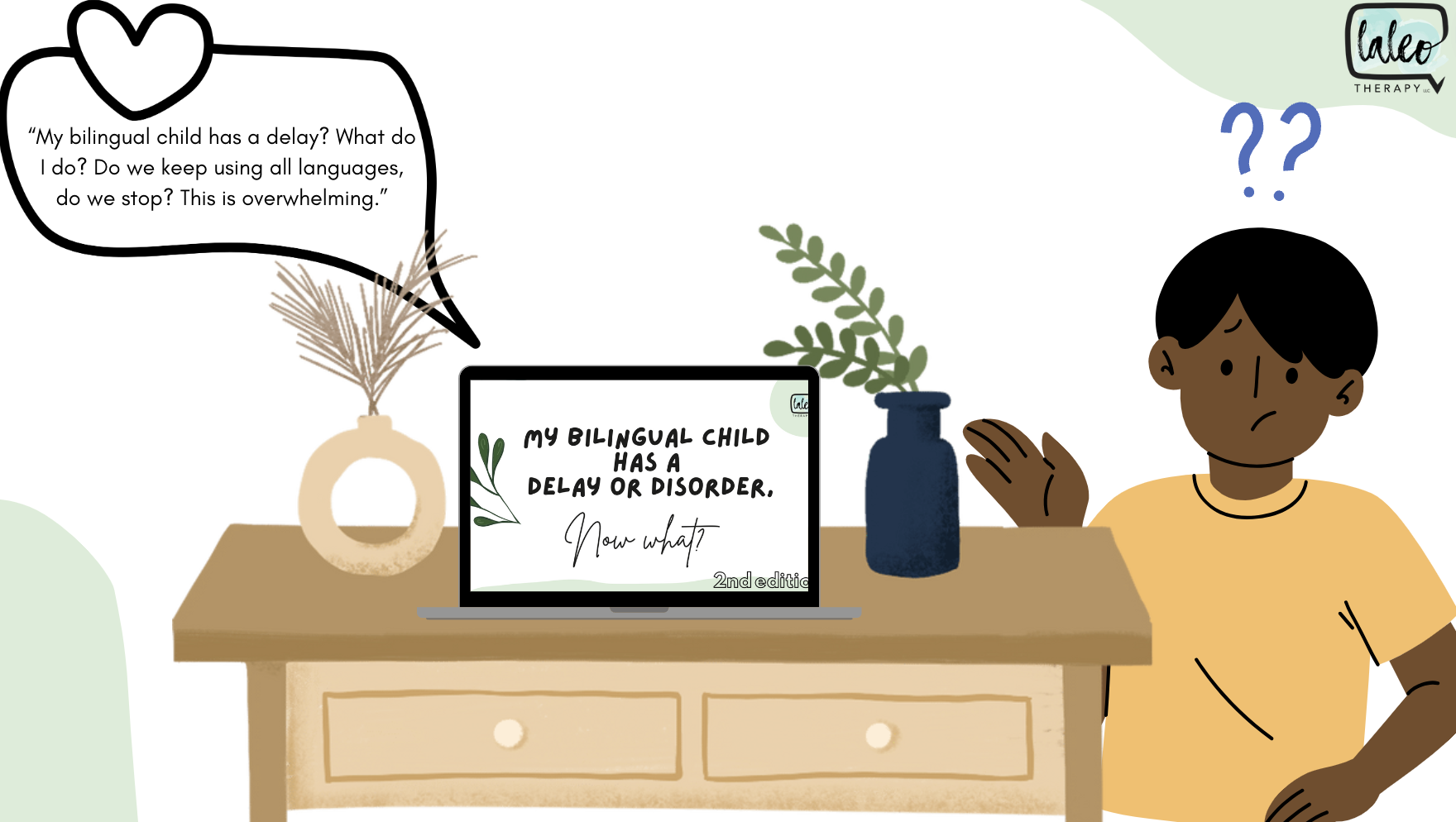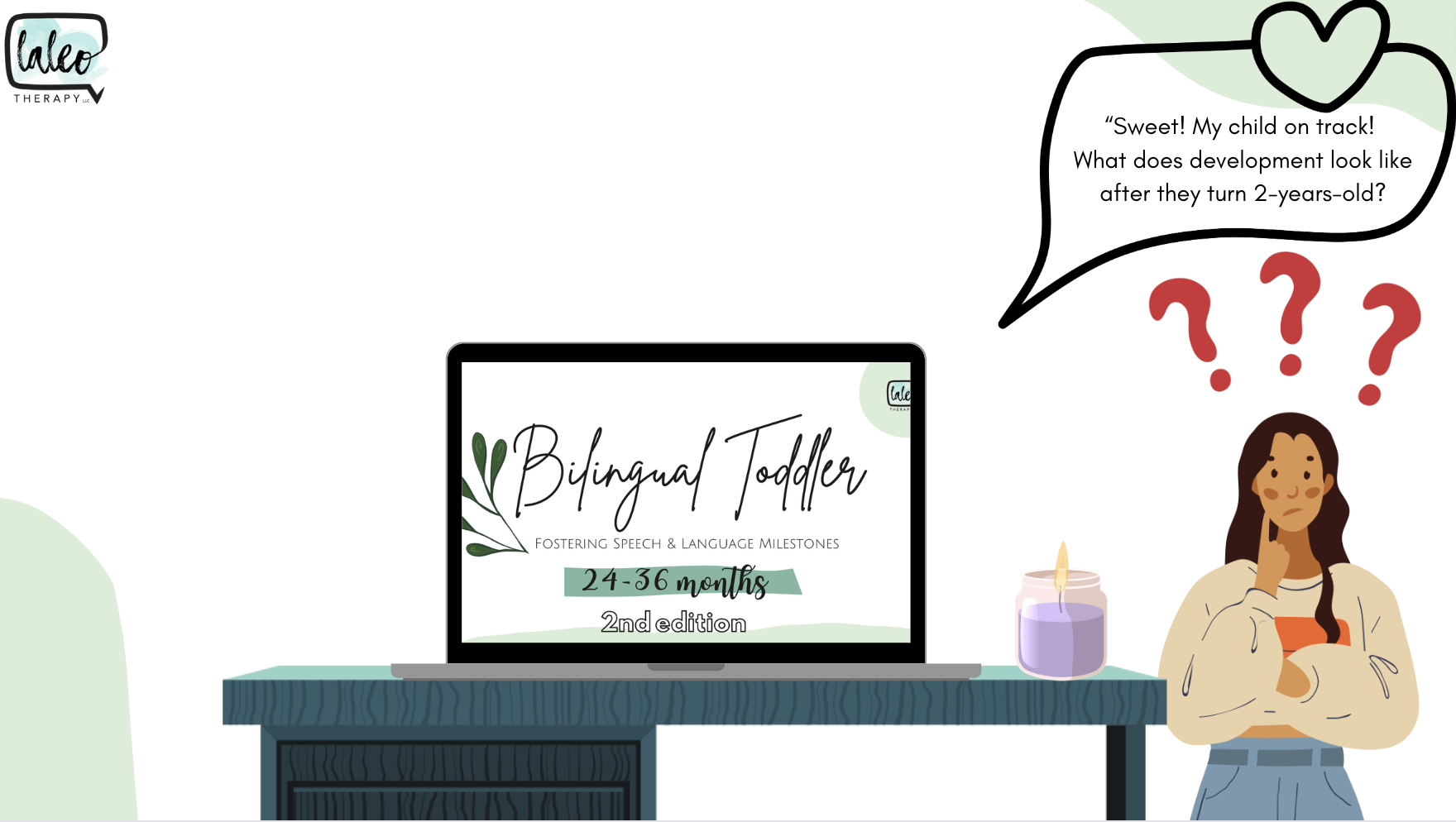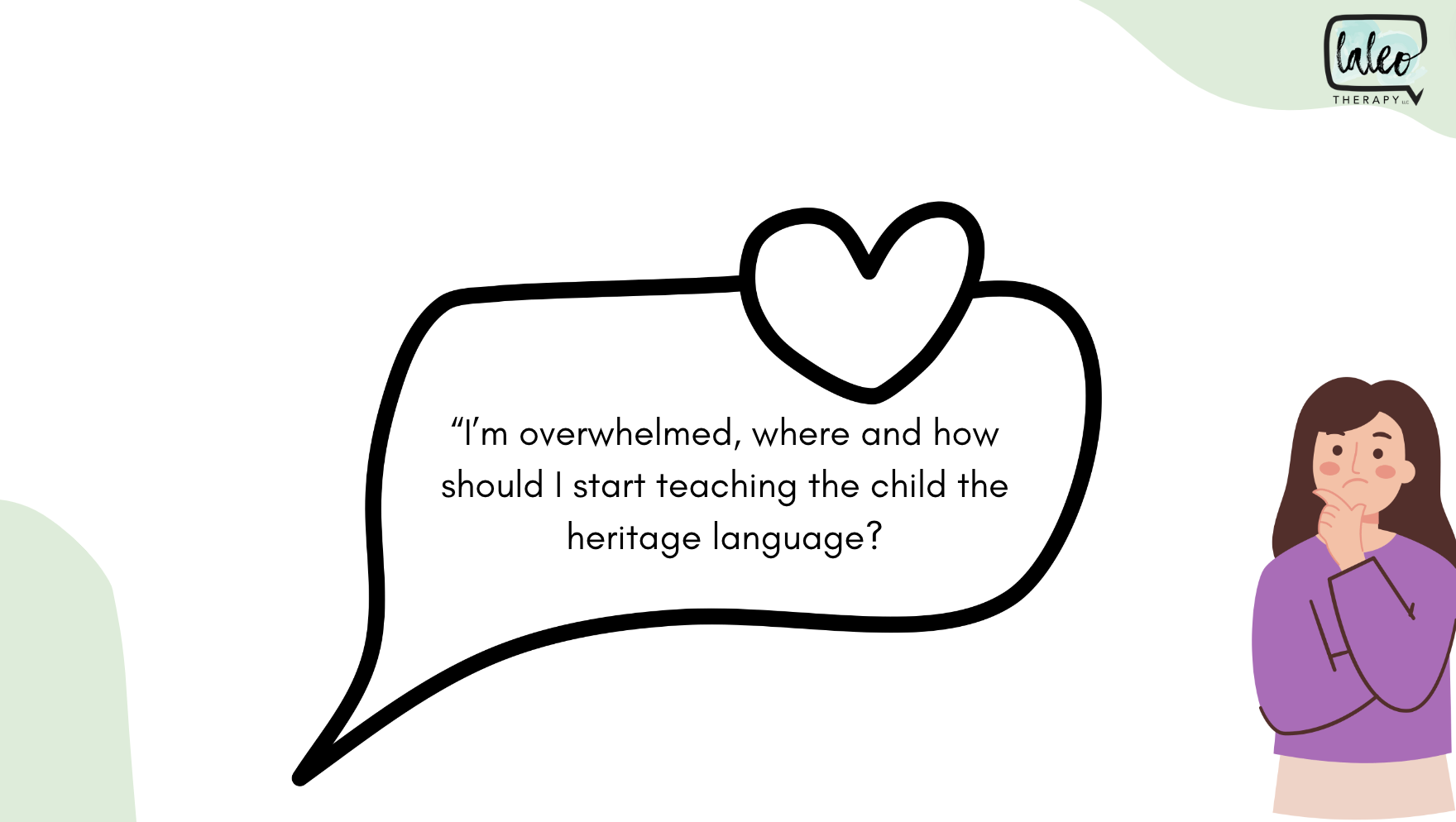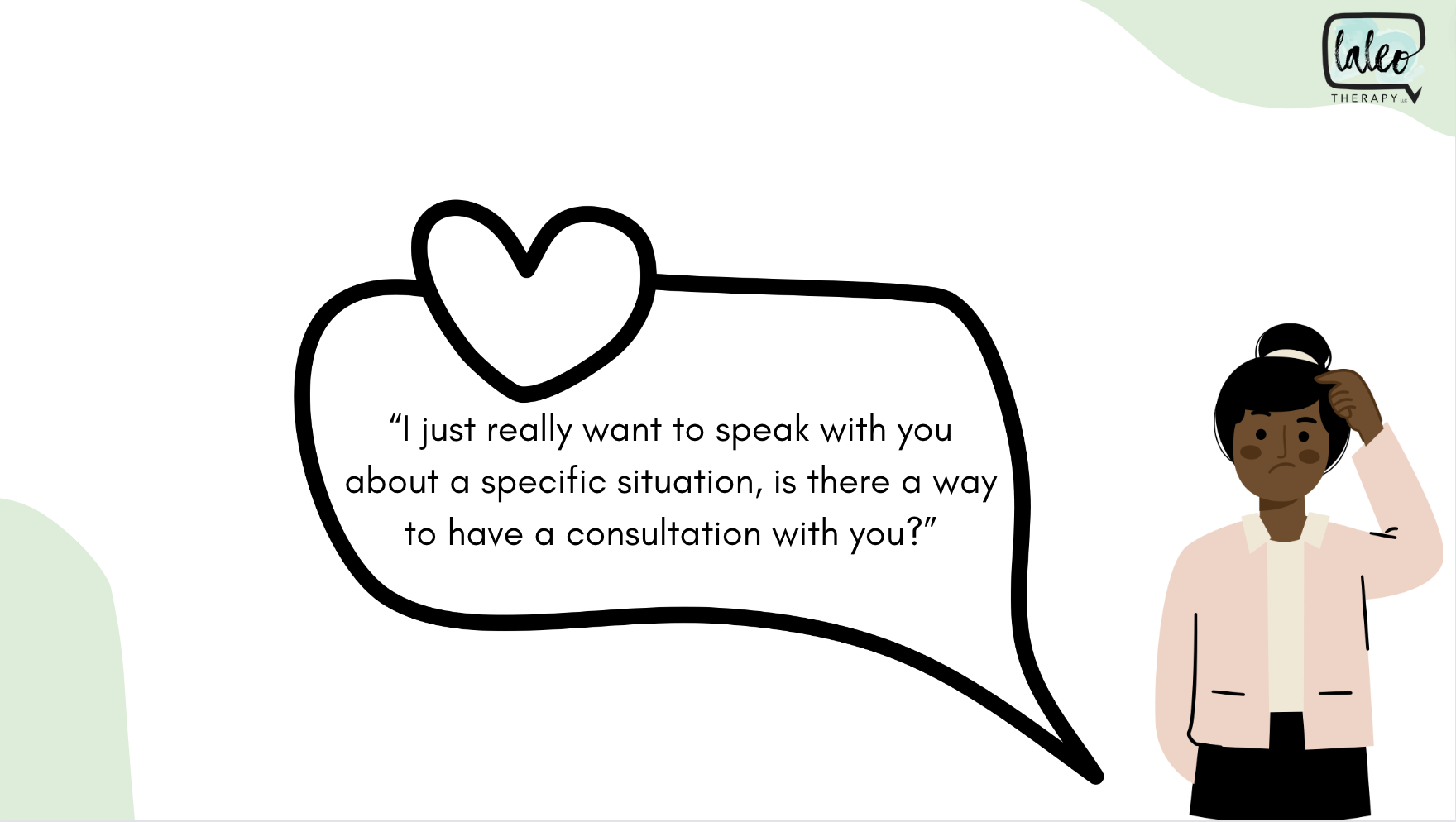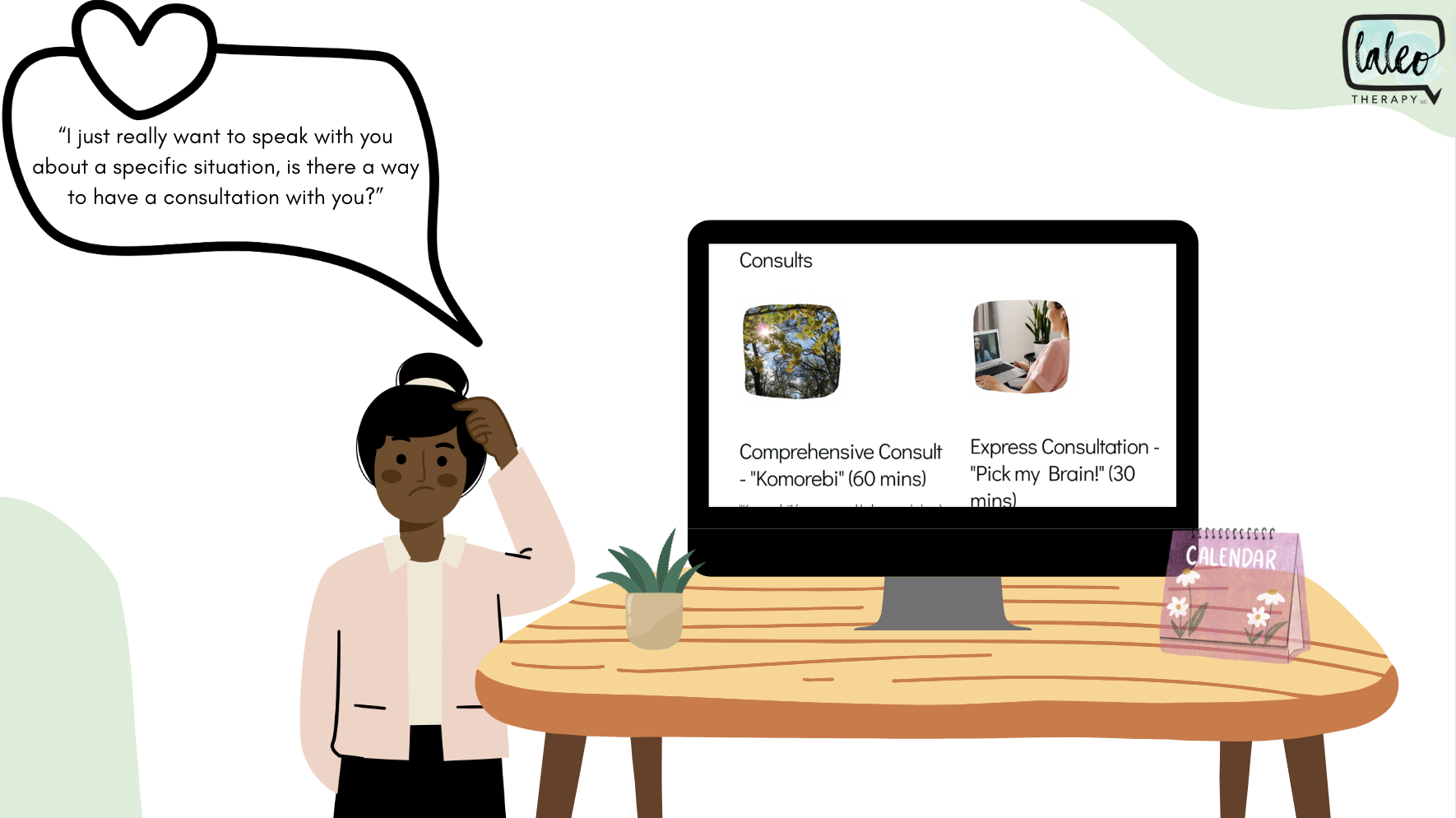Bilingual Developmental Milestones (2nd edition)!
Hello, Hola! 👋🏼
Welcome to the "tell me more" blog post about the developmental categories you saw in the “# of words quiz - bilingual edition”.
First let me quickly introduce myself. My name is Claudia Serrano Johnson. I am a Colombian-born, Latina with a Masters in Speech- Language Pathology specializing in Bilingualism.
I’m also a mom of three bilingual kiddos!
If you want to read up more, head over to the "About me" section of my website.
Before we dive into the early milestone categories,
I want to chat about…
The Purpose Of Milestones:
My hope is not to harbor an environment of comparison that causes panic, fear, or guilt.
My hope with this resource is for *you* to tune into the child's development, so you can figure out if you need to step into your advocacy roll as a caregiver, that way the child can have the resources they need to be able to communicate their wants, needs, dreams, joys, thoughts.
Super Important!
Particularly for bilingual or multilingual children — You need to make sure that you are counting their words correctly. I cannot stress this enough. Parents and professionals often miscount the # of words a bilingual child may have. This can lead make a child appear to have a delay when they truly don’t! Especially in bilingual children.
You might be saying: “I honestly don’t know how to count a bilingual child’s words.” That's okay! Most people don't! That’s why I’ve created this webinar to explain exactly how to count early words in bilingual kids.
Another Important point!
Please know that we don't just look at # of words in early development, we also look at pre-language skills. it's mentioned in the quiz for the early months (12-14). So if you saw that, you may be thinking, “The questionnaire mentioned ‘pre-linguistic skills’. What are those?”
Okay here it is! Finally...
The 5 group categories that I came up as I was reading and analyzing the original sources on early milestones.
“Rocking & Talking”
This group of kiddos is "rocking" meaning easily accomplishing each milestone and "talk, talk, talking." They are what you generally think of as the "chatty, verbose" kiddos. So they land on the 50th or more percentile. They sit in the middle or ahead of half the peers their same age. And if your child isn't in this category, these kids are the ones you will be tempted to compared them to. Clearly language is a strength of theirs.
“Striving & Thriving”
This group of kiddos is "striving" (aiming) toward each milestone and "thriving" (growing) while at it. What the general public thinks of as the "stereotypical" communicator for that age. They are in the 25th-35th percentile. My professional recommendation for this group is to continue providing natural/organic language input.
“Cruising & Musing”
This group of kiddos is "cruising" (slowly/methodically moving toward the goal) across each milestone and "musing" (contemplating/taking it all in) while at it. What you generally think of as the child who isn't super chatty but isn't significantly behind. 15th percentile. 85% of kids have the same or more words than the child and 15% of their same age peers have the same or less.
My professional recommendation for this group is: implement language development strategies & monitor. Now some parents may benefit from working 1:1 with an SLP, others can implement the strategies at home on their own.
“Placing & Pacing”
This group of kiddos is "placing" themselves right at the milestone and "pacing" (slowly but surely) working themselves through them. What you generally think of as "the milestone." 10th percentile. If a kiddo is in the 10th percentile, 90% of their same-age peers have the same of more words. and 10% of kids their age have the same or less words. This is generally what pediatricians and associations like the CDC use and label as the "milestone."
This should be the very minimum or "cut off point" and anything below it should be a referral to see a specialist. Not to cause panic but to a) see what may be going on, could be something as simple as fluid in the ears and b) give you tools!
So if your child is here, my professional recommendation to ensure they catch up to their peers, is to absolutely implement language development strategies & *closely* monitor their progress.
Now, some parents have the knowledge and resources to do that at home. Some don't. If the parent doesn't have the knowledge and resources, it may be beneficial to provide language development strategies and/or link up with an SLP.
“Drifting & Gifting”
This group of kiddos is "drifting" (moving away) from the milestones and would benefit from the "gifting" of specialized insight and support. What you generally think of as "Late talkers/delayed." Less than 10th percentile.
My professional recommendation is to consult with a speech and language specialist for further insight and support. Again, this is not to cause panic but to root for you, to empower you, to equip you, to give you tools!
Disclaimers!
1) First, let's talk about different types of language processors.
There are kiddos who develop language via the analytic language route and the milestones we just talked about apply to them.
However, there are kiddos that develop language via the gestalt language route, and the “single word count early milestones” that we just talked about, do not describe their language development patterns and rhythms. If you suspect your kiddo is a Gestalt Language Processor (GLP), I recommend you seek out resources and support regarding the different language development phases GLPs go through.
2) The second disclaimer about the norms we just talked about is that they are developed with neurotypical children in mind.
What is neurotypical? It’s what science and societies have defined as “typical development."
But the beautiful reality is that diverse minds and brains exist...and not every child will follow those "neurotypical milestones" at the same rate or in the same pattern.
This is why if your kiddo isn't meeting the early language milestones, it's not necessarily a reason to panic but to get curious about their development. In that process it would be helpful to consult with a speech and language pathologist and others developmental professionals who may be able to support you and your child in the best way possible.
Lingering questions!?
I did 3 months of reading and analyzing early language milestones. I am more than happy to explain to you the whole process via this webinar!
If you want to learn the core concepts of bilingualism, I recommend this webinar!
Bilingual children with true delays CAN continue to be bilingual. However, there are several factors we need to consider to ensure their success in both languages. Check out this webinar if the topic is relevant to you.
A couple more lingering questions: “My child on track! What does development look like after they turn 2-years-old?" Check this bilingual toddler webinar!
This is my # 1 recommendation for bilingual language development for busy parents - verbal routines! Check this amazing webinar out on exactly how to get into the habit of using the heritage language!
Finally, you may be thinking:“I just really want to speak with you about a specific situation, is there a way to have a consultation with you?” I sure do! Be sure to book me on my website!
I hope you find this resource helpful as you support a multilingual language learner!
Con mucho apoyo | I have your back,
Claudia Serrano Johnson, M.S., CCC-SLP
Bilingual Speech-Language Pathologist & Founder of Laleo Bilingual Therapy
Sources:
1) Elias, Paulina & Blackwell, Amanda [@natural.communication]. (2022, October 22). [Two ways of developing language]. Retrieved from https://www.instagram.com/p/CwkaJTbu6Uk/?hl=en
(2) Dwyer, P. (2022). The neurodiversity approach (es): What are they and what do they mean for researchers?. Human Development, 66(2), 73-92. Chicago
(3) MacArthur-Bates Communicative Development Inventories: User's Guide and Technical Manual, Third Edition. Virginia A. Marchman
(4) Heilmann, J., Weismer, S. E., Evans, J., & Hollar, C. (2005). Utility of the MacArthur—Bates Communicative Development Inventory in identifying language abilities of late-talking and typically developing toddlers.


